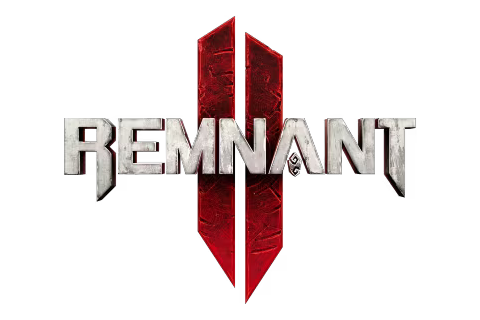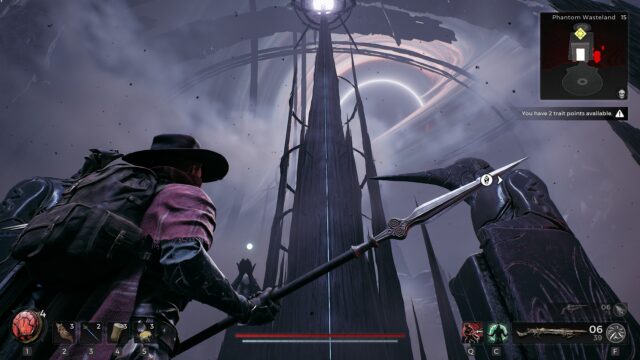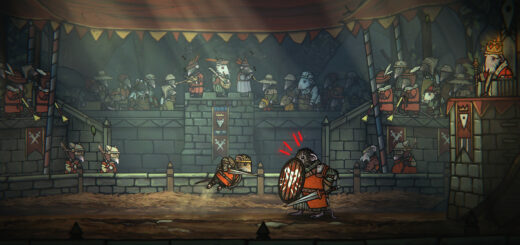Remnant II Review
Once More, With Feeling
Remnant: From the Ashes was a pleasant surprise; a successful, if modest, undertaking that left a strong impression. At the same time it was a game with obvious shortcomings. From an overly wordy narrative that drowns the player in lore dumps to select boss fights that tried patience, there was plenty of room for improvement. Remnant II is fortunately an improvement in nearly all respects, expanding on the the first game in interesting ways that push greater player agency and cooperative engagement while maintaining the same tight gun play. In that same breath, the problems from the first game are still present, though to varying degrees of annoyance.
Starting up after the first game’s final DLC, Remnant II puts players in the role of another survivor tasked with defeating the Root, a hostile all-consuming inter-dimensional entity that is discovered to have not been fully eradicated by the end of said DLC. After arriving at an outpost filled with survivors, a girl named Clementine goes missing and the player is sent to find her whereabouts, which ultimately leads them on a chase through multiple dimensions in search of a way to destroy the Root once and for all. A greater effort has been put into the presentation this time around, unfortunately leading to the opening hour or so being very linear and bogged down in cutscenes. In that vein, wordy conversations still persist each time someone travels to a new world, where a new NPC will share their life story and the situation that led to the current crisis the player needs to resolve. While these become less frequent as the game goes on, its unfortunate that the game puts its worst foot forward in this manner, opting for a lot of writing being told at the player instead of a more economic approach.
Once the game gets past this opening hour or two, it hits the ground running and rarely slows down. Combat is primarily a third-person shooter with the option to throw in some melee. Players have two guns available to them at any time while a melee weapon acts as a default attack when not aiming down sights. The combat is quite strong: aiming is smooth and snappy, weapons feel distinct from one another, and the seamless way the game switches between shooting and melee still has a novel feel to it. While most enemy encounters rarely rise above a shooting gallery, the pressure of the enemies keeps the player on their toes and the flow and feel of the combat makes bouncing on those toes enjoyable.
The first noticeable improvement from the first game comes from the expanded RPG elements. In the first game, the player’s Archetype functioned as little more than a starting class with a locked ability. Remnant II, however, turns them into full-on classes with multiple skills and passive traits, though only one active skill can be equipped at a time. That is until players unlock and equip a second Archetype, giving them access to another suite of passive traits and another active ability. It offers a very strong foundation on which players can start experimenting with different types of builds, which is then further enhanced by the numerous types of rings, amulets, weapon mods, and variant healing options that can be found in the game. If there’s any downside to the large quantity of items that can be found, it’s that players will find far fewer weapons and pieces of armor, leaving them stuck playing with the same two or three weapons for the majority of the game. This is not helped by the stingy rate at which the game’s drops both salvage, the game’s generic currency, and primary weapon upgrade materials. To its credit, the game does offer a kind of solution to this problem in the form of its replayability and co-op.
Like the first game, Remnant II has players hopping between different dimensions, each dealing with the manifesting Root in a different manner. Each campaign is semi-randomized, presenting players with one of two subplots in each area and a healthy dose of unique events and side dungeons. However, it’s impossible to see all of the content the game has to offer in a single playthrough. Players are given several methods to see more: joining someone else’s game, rolling a new instance of a level in Adventure Mode, or begin a New Game+. Co-op is incredibly easy to make work and any character progress and items found in a partner’s world will carry over to the joining player’s. Adventure Mode generates a newly-randomized instance of one of the game’s maps separate from the campaign that can be re-rolled as many times as desired, offering a chance to witness unseen content while gaining more experience and items on the way. There does come a point where repeated content becomes increasingly common and fresh content appears less often. The quickness of the levels themselves and the pace at which the game doles out new events and secrets helps mitigate this, however.
If there’s one thing Remnant II loves, it’s a puzzle. Scattered throughout the game and hidden beneath the surface are environmental puzzles that break up the action. Many of them are cleverly implemented, requiring out of the box thinking, careful exploration of the environment, or even a second player to discover the solutions. It’s a surprisingly good community-building tool, whether in game or out, as players work together to try and find the solutions. However, some of these lean way too hard into the obtuse, to the point where it’s difficult to ascertain how one would ever be able to discover the end result. The developers even included a secret so obtuse that it had to be discovered via data mining, a decision that’s still hard to place as cool, inane, or somewhere in between. But even with the more difficult puzzles being a bit too out there, the rewards for solving them are unique.
Another aspect in which the game mostly shines is the centerpiece boss fights. They give another change of pace to the flow of the game and present more distinct combat challenges. An issue of the first game was the need to replenish a player’s ammunition in the long boss fights, which necessitated many additional minor enemies to appear throughout the battles. Remnant II does this far less and when it does, it’s far more manageable. In other instances, Gunfire Games pushes the design space to allow for some truly inspired fights, such as a stage in which players must shoot targets on the sides of numerous cubes attempting to crush them all while navigating a labyrinth. There are still some lingering issues with bosses. Certain builds are just going to have problems dealing with many bosses, particularly ones that rely heavily on close range damage. Certain bosses will also prove to be the most difficult part of the game, including another final boss that is a too much in terms of visual overload.
Technically, Remnant II is a more impressive game than the first. The experience is much smoother and no noticeable bugs encountered in the review playthrough. The game is not the greatest looking, but its environments are varied and the enemies, excepting some bosses, are legible. The sound design is distinctive and especially critical in keeping track of some of the more chaotic visuals in fights. The score is mostly unmemorable, but there are few boss tracks that kick it in to a higher gear. While primarily played on a desktop PC for the review, the game is technically playable on Steam Deck, but the frame rate and the responsiveness of the controls prevent it from being an ideal way to play.
Though there is enough in the margins to find fault with, Remnant II is still a sequel that only improves upon the first game. While the storytelling leaves a lot to be desired, the rest of the game receives an easy recommendation. Even the difficulty spikes and slower-than-desired rate of obtaining new weapons and upgrade materials can’t get in the way of a fun action RPG with solid combat, wide variety of play styles, and a bunch of secrets to uncover. It’s a positive step in the right direction for the series and makes me excited for what Gunfire Games will do next.


Excellent combat foundation
Expanded RPG elements from the first game
Accessible cooperative options
Engaging secrets and puzzles help break up the standard game flow...
...but some of the puzzles are too obtuse
A lot of story but none of it very strong
Some bosses are still tuned too difficult









Recent Comments